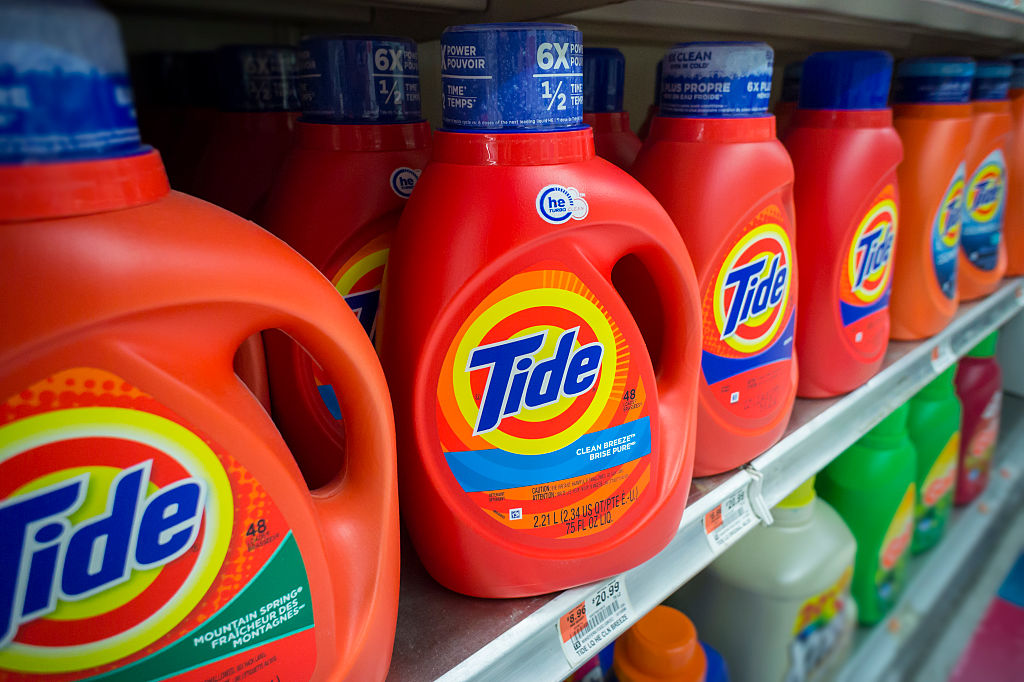Buffered ETFs for a Rocky Market
Buffered ETFs provide protection during market downturns, but in exchange, your gains are capped.


Rocky markets have put a spotlight on defined-outcome exchange-traded funds (ETFs), which protect investors from a portion of stock market losses in exchange for capping some of the gains.
These funds, also called buffered ETFs, invest in options linked to a broad benchmark in order to provide a specific amount of downside protection – 9%, 10%, 15%, 20% or even 100% – over a distinct time frame called the outcome period, typically one year (though three-month funds are now popular).
How much you forfeit in gains depends on the amount of protection the fund offers. The bigger the cushion, the smaller the potential gain.

Sign up for Kiplinger’s Free E-Newsletters
Profit and prosper with the best of expert advice on investing, taxes, retirement, personal finance and more - straight to your e-mail.
Profit and prosper with the best of expert advice - straight to your e-mail.
A recently launched PGIM fund tied to the S&P 500 Index with 100% protection on losses over one year had a 7% cap on upside returns, while an Allianz ETF with a 10% shield sported a cap of roughly 16%, net of fees.
It's important to find a fund that aligns with your investment objectives and risk tolerance, says Mike Loukas, chief executive of the firm behind TrueShares defined-outcome funds.
To get you started, we've highlighted a few buffered ETFs that may work for investors with certain risk tolerances. Use these suggestions to start your own research.
How to find the best buffered ETFs for you
Bear in mind that the strategies, which charge average annual fees of 0.72%, are structured around specific outcome periods because of the options they buy, but the funds themselves are designed to be buy-and-hold investments.
When a fund's outcome period expires, the fund managers reset it by buying new options for the next cycle.
That said, the timing of purchases should be deliberate. To take advantage of a fund's full downside buffer, it's best to buy shares in a defined-outcome fund a day before the start of the period (the day the fund resets).
"I recommend buying on the reset day, an hour or so before the market closes,” says Beverly Hills, California, adviser Stuart Chaussee. Remember, the advertised protection and cap on gains only apply over the full outcome period.
And note that the cap on gains will likely vary from one outcome period to the next because it is based on options prices at the start of the period, which fluctuate.
For conservative investors: A 100% buffered fund protects against a colossal stock market loss over a one-year period. And if the market doesn't falter, you might do better than a money market fund.
The current cap on gains for the iShares Large Cap Max Buffer (MAXJ), which will reset June 30, is 10.6% for investors who bought at the start of the outcome period last June.
A 20% buffer fund is another option. Chaussee likes the AllianzIM U.S. Large Cap Buffer20 July (JULW). The fund's current cap, which resets July 1, is 11.64%.
For moderate-risk investors: Funds with 15% buffers on declines are the most popular with investors. The July-dated fund of a popular series, the Innovator U.S. Equity Power Buffer ETF July (PJUL), had a cap of 13.7% on gains for investors who bought shares last June. It will reset June 30.
For aggressive investors: Funds with 9% cushions against losses are the obvious choice here. The current cap on the Innovator U.S. Equity Buffer ETF July (BJUL), which will reset on June 30, is 17.4%.
Bullish investors could consider TrueShares Structured Outcome funds. Instead of a cap on gains, investors can expect to reap 73% to 85% of the S&P 500's price return, in exchange for 8% to 12% protection on losses. The TrueShares Structured July-dated fund (JULZ) resets June 30.
This item first appeared in Kiplinger Personal Finance Magazine, a monthly, trustworthy source of advice and guidance. Subscribe to help you make more money and keep more of the money you make here.
Related Content
Profit and prosper with the best of Kiplinger's advice on investing, taxes, retirement, personal finance and much more. Delivered daily. Enter your email in the box and click Sign Me Up.

Nellie joined Kiplinger in August 2011 after a seven-year stint in Hong Kong. There, she worked for the Wall Street Journal Asia, where as lifestyle editor, she launched and edited Scene Asia, an online guide to food, wine, entertainment and the arts in Asia. Prior to that, she was an editor at Weekend Journal, the Friday lifestyle section of the Wall Street Journal Asia. Kiplinger isn't Nellie's first foray into personal finance: She has also worked at SmartMoney (rising from fact-checker to senior writer), and she was a senior editor at Money.
-
 Stock Market Today: Nasdaq Hits a New High as Nvidia Soars
Stock Market Today: Nasdaq Hits a New High as Nvidia SoarsA big day for Nvidia boosted the Nasdaq, but bank stocks created headwinds for the S&P 500.
-
 June CPI Signals Tariff Impact: What the Experts Say
June CPI Signals Tariff Impact: What the Experts SayThe June CPI report shows that inflation is accelerating, but at a pace that's in line with economists' expectations.
-
 I'm a Financial Planner: Here Are Five Smart Moves for DIY Investors
I'm a Financial Planner: Here Are Five Smart Moves for DIY InvestorsYou'll go further as a DIY investor with a solid game plan. Here are five tips to help you put together a strategy you can rely on over the years to come.
-
 Neglecting Car Maintenance Could Cost You More Than a Repair, Especially in the Summer
Neglecting Car Maintenance Could Cost You More Than a Repair, Especially in the SummerWorn, underinflated tires and other degraded car parts can fail in extreme heat, causing accidents. If your employer is ignoring needed repairs on company cars, there's something employees can do.
-
 'Drivers License': A Wealth Strategist Helps Gen Z Hit the Road
'Drivers License': A Wealth Strategist Helps Gen Z Hit the RoadFrom student loan debt to a changing job market, this generation has some potholes to navigate. But with those challenges come opportunities.
-
 Stock Market Today: Markets Chop Up More Trump Threats
Stock Market Today: Markets Chop Up More Trump ThreatsStocks are grinding to new highs on light summer volume, and bitcoin is only getting bigger.
-
 If You'd Put $1,000 Into Procter & Gamble Stock 20 Years Ago, Here's What You'd Have Today
If You'd Put $1,000 Into Procter & Gamble Stock 20 Years Ago, Here's What You'd Have TodayProcter & Gamble stock is a dependable dividend grower, but a disappointing long-term holding.
-
 Financial Pros Provide a Beginner's Guide to Building Wealth in 10 Years
Financial Pros Provide a Beginner's Guide to Building Wealth in 10 YearsBuilding wealth over 10 years requires understanding your current financial situation, budgeting effectively, eliminating high-interest debt and increasing both your income and financial literacy.
